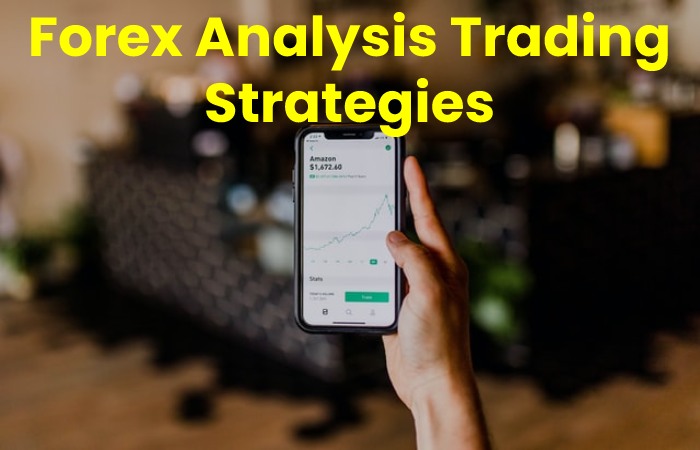Forex Trading Strategies – Participating in foreign exchange trading allows you to participate in a world market with enormous potential. FX has earned a reputation for quick profits due to its appeal among day traders. There are many different strategies in forex trading, so you must choose one that suits your level of experience, goals, and knowledge. An effective forex trading strategy helps traders assess the market and make successful trades with proper risk management strategies, regardless of whether they are trading manually or using certain forex trading robots.
To help you find the right trading strategy for you, here are the basics, pros, and cons of some of the most well-known forex trading methods.
Table of Contents
Position Trading
Position trading is an approach that focuses primarily on fundamentals over a long period but can also use technical tools. It is a trading method where traders keep their positions open for a long time. This technique requires traders to take a broad view of the market and put up with small changes that work against their position as a long-term investment strategy. Considering how macroeconomic factors can affect the forex markets is key to projecting trading ideas with this strategy.
Trend following is a common approach used by position traders. They use statistical information to identify emerging trends and determine the best times to enter and exit them. Traders also use fundamental analysis to assess the current economic outlook. Technical analysis, like other techniques, can be used to define entry and exit positions.
Professionals
- It simply takes a short period.
- The risk/reward ratio is extremely high.
Versus
- There are very few options to trade.
- You must have a deep understanding of fundamental and technical analysis.
Trend Trading
This method contains trading in the trend of the prevailing price trend, as the name implies. Trend trading seeks to profit from the directional movement of a market. First, traders must determine the underlying market direction, duration, and intensity. These features will indicate how strong the current path is and whether the market will reverse.
Traders often use MACD and ADX to gauge the magnitude and direction of the current trend. As price momentum changes ahead of a price move, momentum indicators like the RSI can help determine exit points. An oscillator is often used to indicate entry positions, and exit points are derived using a favourable risk-reward ratio.
Professionals
- There is a range of business possibilities.
- The risk/reward ratio is advantageous.
Versus
- It takes a significant amount of time.
- Requires a high level of understanding of technical analysis.
Rank Exchange
Investors will trade around critical support and resistance levels in range trading. This method works successfully in markets with no noticeable patterns and minimal fluctuations. The high and low points that the price reaches before turning back in the opposite direction can define as support and resistance levels on a price movement chart. Range traders are more likely to focus on markets that bounce between these levels without moving in one direction for a stretched period rather than waiting for breakouts.
Range limit techniques can work for any time; therefore, there is no predetermined duration for each transaction. Since breakouts can happen anytime, risk management is an important aspect of this strategy. To spot overbought and oversold levels, range traders can use banded momentum indicators like the Stochastic Oscillator and the RSI. Range trading can produce favourable risk-reward ratios, but each trade requires a significant time commitment.
Professionals
- There are many options for trading.
- The risk/reward ratio is positive.
Versus
- It takes a long time.
- It requires in-depth knowledge of technical analysis.
Forex Analysis Trading Strategies

However, most trading strategies are based on the universally accepted principles of Forex market analysis used to understand the movement of the market. These principles include technical and fundamental analysis as well as market sentiment.
And also, each of the mentioned methods allows one to determine the current trend and make a rational forecast about the behaviour of the market in the future. If technical analysis deals primarily with charts and mathematical statistics, then fundamental analysis considers macroeconomic and political factors that can significantly influence international currency exchange rates. Entirely another approach uses the market sentiment estimation strategy, which is based on the trader’s opinions about the current state in the market. Below you can find full information about each popular analysis method.
Types of Trends in Trading
- But if the price trend is up, we are seeing an uptrend.
- Sell if the price trend goes down; we are seeing a downtrend.
- Wait if the price trend moves neither up nor down but horizontally. We observe a sideways trend, in other words when the market is flat.
Conclusion
When deciding which trading method to follow, look at the amount of time you can spend, the risk-reward ratio, and the overall trading chance percentage. Based on individual characteristics, each trading technique suits various traders. Traders can take the lead in the right direction by combining their unique trading style with the right strategy.
Also Read: How to Contribute or Invest in the Stock Market with Little Capital?


Review Top 3 Forex Trading Strategies to Follow for Successful Trading.